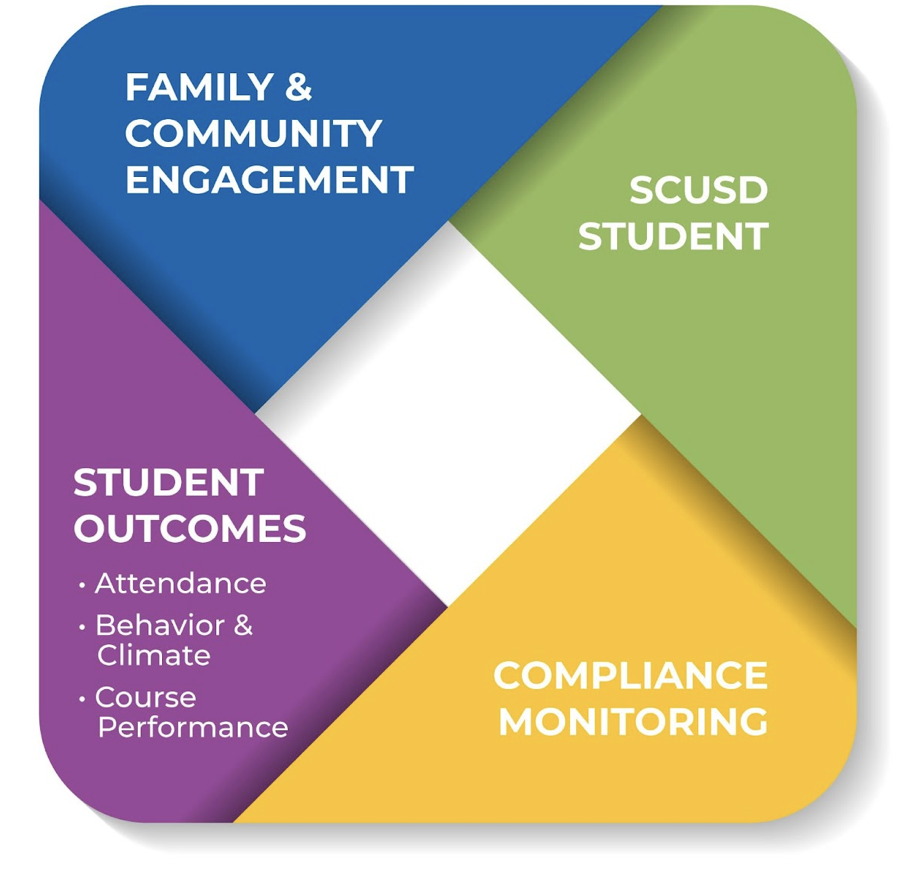Special Education
Special Education Department
Mission & Department Goals
It is the mission of SCUSD Special Education Department to provide appropriate, high quality, evidenced based supports and services to students in the least restrictive learning environment.
The Department is driven to LEAD this work by the following department focus areas:
- Launch proactive systemic data-based decision making
- Empower through adult professional learning & coaching
- Accelerate Instruction & Learning
- Deepen understanding in order to implement MTSS
Related Services
Over 6,500 students qualify for special education and related services in the Sacramento City Unified School District (SCUSD). Our team of teachers, instructional assistants, related service providers, program specialists, and administrators are dedicated to providing high quality individualized services to students. According to both federal and state law, the goal of special education is to help students with disabilities become as independent as possible as they move through the grade levels. In alignment with the SCUSD District Guiding Principle that, “all students are given an equal opportunity to graduate with the greatest number of postsecondary choices from the widest array of options”, each program and service provided through special education is devoted to this principle.
The Special Education Department is not able to reach these goals alone. We value the partnerships we have built with our parents/guardians in this effort.
SCUSD Special Education Local Plan Area (SELPA)
SCUSD is a single district SELPA and is responsible for the development of a local plan, describing how it provides special education services. Further, the SCUSD SELPA collaborates and supports the operations of the SCUSD Community Advisory Committee (CAC). For more information and access to documents, please visit the SCUSD SELPA website: https://www.scusd.edu/selpa To learn more regarding the legal background and overview of SELPAs statewide, please visit the California Department of Education’s SELPA website: https://www.cde.ca.gov/sp/se/as/caselpas.asp
Parent Resources
Visit our Parent Resource page that highlights resources and support for parents, guardians, and families of children with disabilities.
Special Education Student Records
Special Education Student records contain information related to an identifiable student (other than directory information) which is maintained by the District or is required to be maintained by a school employee in the performance of their duties, whether by handwriting, print, tapes, film, microfilm or other means.
The Special Education Department is responsible for requesting and sending all Special Education Student records and maintaining records for students receiving special education services. Special Education staff process mandatory interim pupil records for all students receiving special education services. The Special Education Department staff may assist with student record requests, subpoenas for student records, and challenges to student records.
Staff Directory
Program Records Technician
Tommy Vang
Phone: (916) 643.9205
Fax: (916) 399-2030
Email: SPEDRecords@scusd.edu
Mailing Address:
SPED Student Records
SCUSD Special Education
Dept 5735 47th Avenue
Sacramento, CA 95824
Procedural Guide:
Student Records
Sample Records Request Letter:
SAMPLE
History/Background of SPED Reviews/Audits
In the Spring of 2017, after conducting a review of the SCUSD’s services for students with disabilities, The Council of the Great City Schools released a report designed to help SCUSD identify systemic changes needed to achieve its goal of maximizing the District’s capacity to educate all students. The full report is available HERE.
In 2018, the California Community College Equity Assessment Lab, released, The Capitol of Suspensions, report sighting data showing SCUSD’s suspension rate for black male students was more than five times higher than the state average. The report, available HERE, included recommendations for addressing the large disparities in discipline within the Sacramento region.
Following the release of the 2019 CA School Dashboard data, four school districts became eligible for Systemic Instructional Review (SIR) Support from the California Collaborative for Education Excellence (CCEE). The purpose of a SIR is to identify strengths, weaknesses, threats, and opportunities (SWOT) in the implementation of instructional initiatives and practices of an LEA through a series of data collection activities. The full report is available HERE.
The report recommendations continue to inform the continuous improvement efforts of the special education department and District at large. For additional information regarding these reports and metrics that the District is currently monitoring, please visit the Special Education Continuous Improvement Dashboard.

